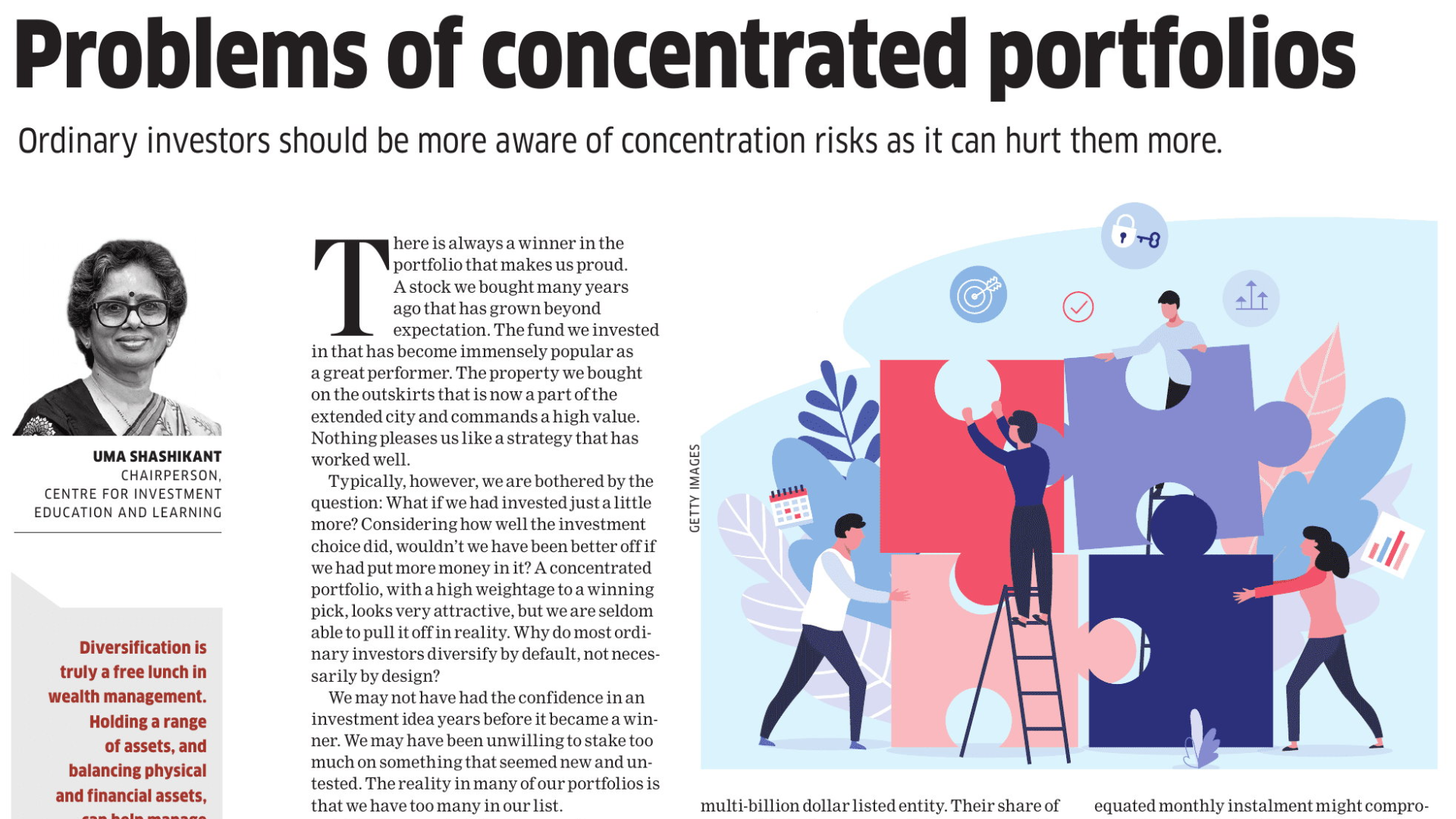Why Concentrated Portfolios Can Hurt Ordinary Investors
There is always a winner in the portfolio that makes us proud. A stock we bought many years ago that has grown beyond expectation. The fund we invested in has become immensely popular as a great performer. The property we bought on the outskirts is now a part of the extended city and commands a high value. Nothing pleases us like a strategy that has worked well.
Typically, however, we are bothered by the question: What if we had invested just a little more? Considering how well the investment choice did, wouldn’t we have been better off if we had put more money in it? A concentrated portfolio, with a high weightage to a winning pick, looks very attractive, but we are seldom able to pull it off in reality. Why do most ordinary investors diversify by default, not necessarily by design? We may not have had the confidence in an investment idea years before it became a winner. We may have been unwilling to stake too much on something that seemed new and untested. The reality in many of our portfolios is that we have too many in our list.
A little here and a little there, and soon enough our investments are spread over a lot of stocks, funds, and bonds. We may not always add to what is winning, but we might be more tempted to book some profits and take the appreciation home. A certain bewilderment is a natural response to an unexpected winner in the portfolio before we take it in and brag about it as our top pick of all time. We regret not holding a lot more of it.
Specialists Don’t Need to Diversify
Concentrated portfolios seem great, but only some of them are created by design. The wealth of a farmer is concentrated in the land, the wealth of a shopowner in his establishment, the wealth of a businessman in the enterprise, and the wealth of a professional in their practice. In these instances, diversification is not a feasible or practical option.
These pursuits require high levels of effort and reinvestment of profits and thrive on specialization. Owners may not see merit in diversification and prefer investing surplus into their own operations.
Another instance of concentration is the wealth of the richest people in the world—mostly derived from the companies they founded. Their wealth remains concentrated because the scale is too large for concentration to hurt.
There is also a case of concentrated wealth arising from too much money—very high net-worth investors placing repeated surplus into real estate. Their financial portfolios remain sufficient for liquidity needs, while property becomes their concentrated bet.
When Does a Concentrated Portfolio Hurt?
For ordinary investors, whose wealth is built from regular income savings, concentrated portfolios pose risks.
Volatility Risks
If wealth is modest relative to income, taking heavy exposure to one asset or stock can jeopardize financial goals. Recovering from a large loss becomes hard. A diversified portfolio smoothens risks and supports regular contributions.
Property Concentration
Early purchase of property often creates a highly concentrated portfolio. EMIs reduce the ability to build other assets. Over years, balance is restored only when savings flow into financial assets.
Asset-Rich, Cash-Poor Retirees
Households may liquidate financial assets for education, health, or weddings, leaving them with only the house and limited time to rebuild wealth before retirement. This leads to the classic asset-rich, cash-poor situation.
Risky Behaviour in Early Earning Years
Low savings capacity pushes some to speculative behavior—trading stocks, IPO punts, and concentrated bets. Without a wealth buffer, these risks can severely hurt their finances.
Diversification is truly a free lunch in wealth management. Balancing physical and financial assets helps manage risks optimally. The temptation to concentrate is high, especially when control and familiarity come with it.
Without the cushion of diversified wealth, concentrated bets remain risky.
UMA SHASHIKANT
CHAIRPERSON, CENTRE FOR INVESTMENT EDUCATION AND LEARNING
Explore More Insights
For deeper insights on portfolio strategy, diversification, and wealth behaviour, explore thought leadership by
Ranjit Jha (CEO)—known for bringing research-driven clarity to wealth creation.
To learn how Rurash Financials helps investors build balanced, risk-adjusted, goal-oriented portfolios, visit the official website.

